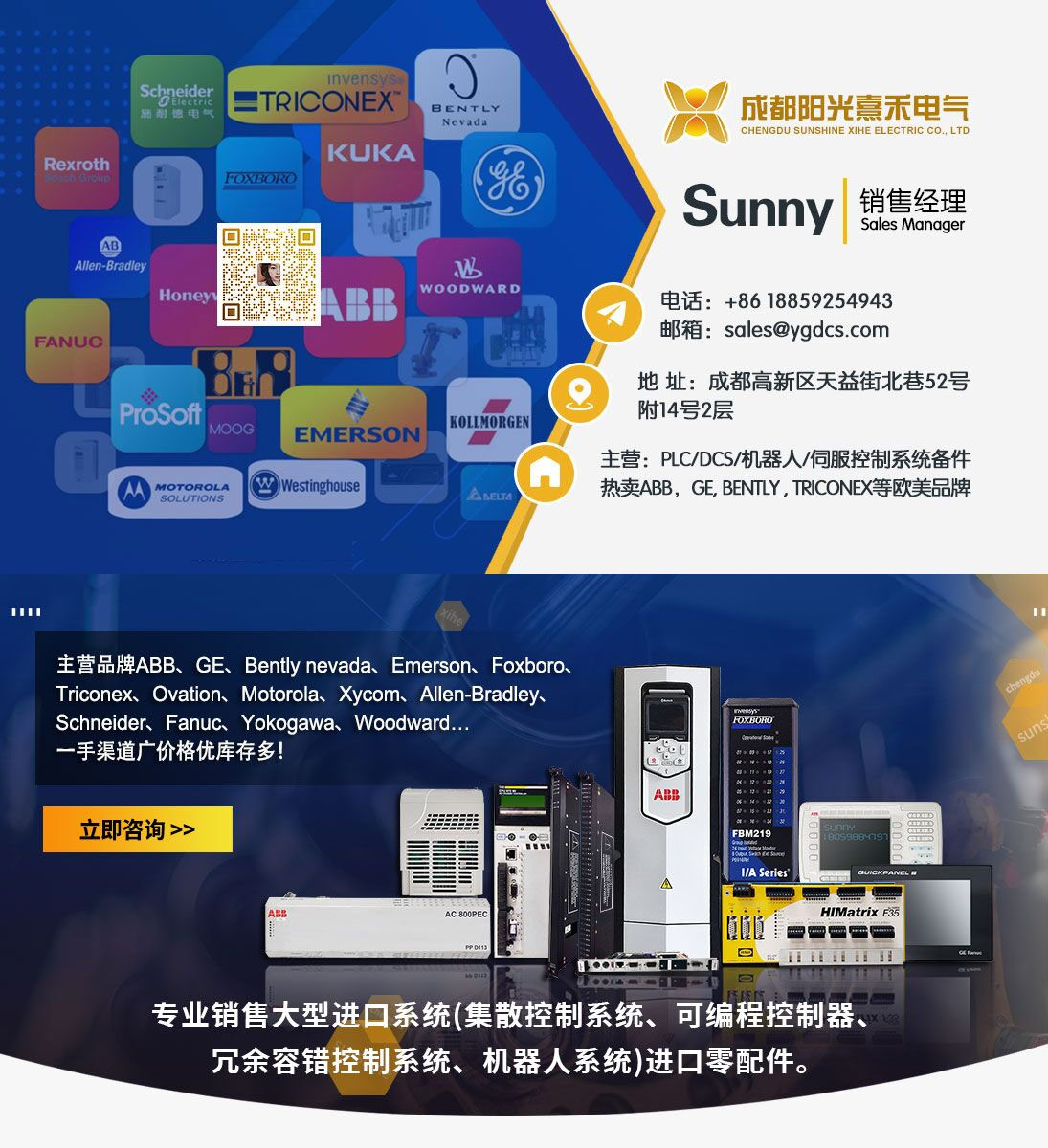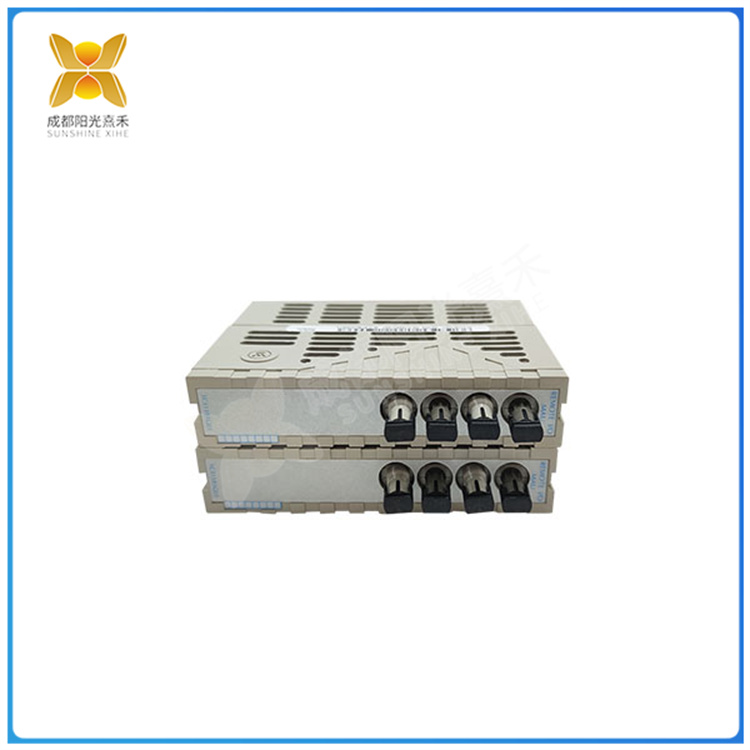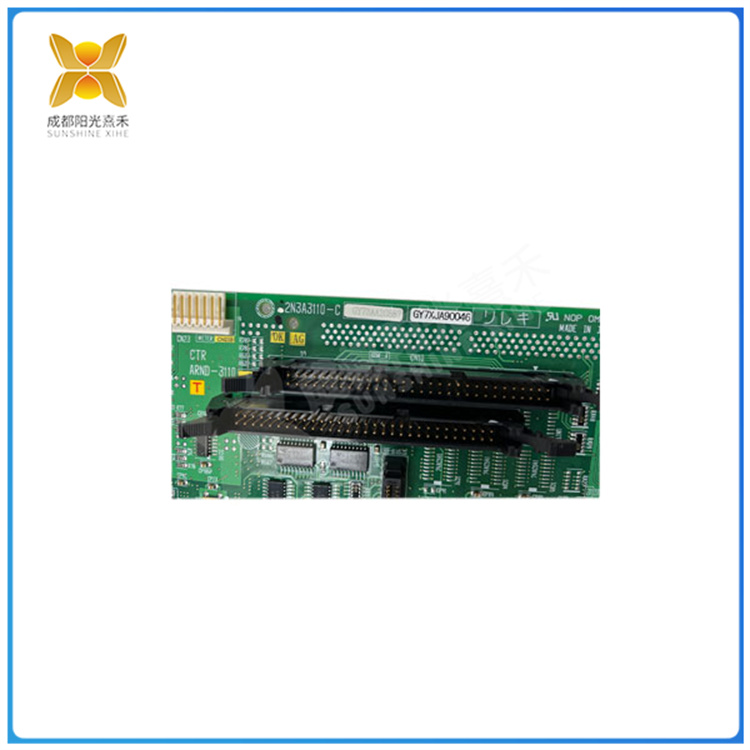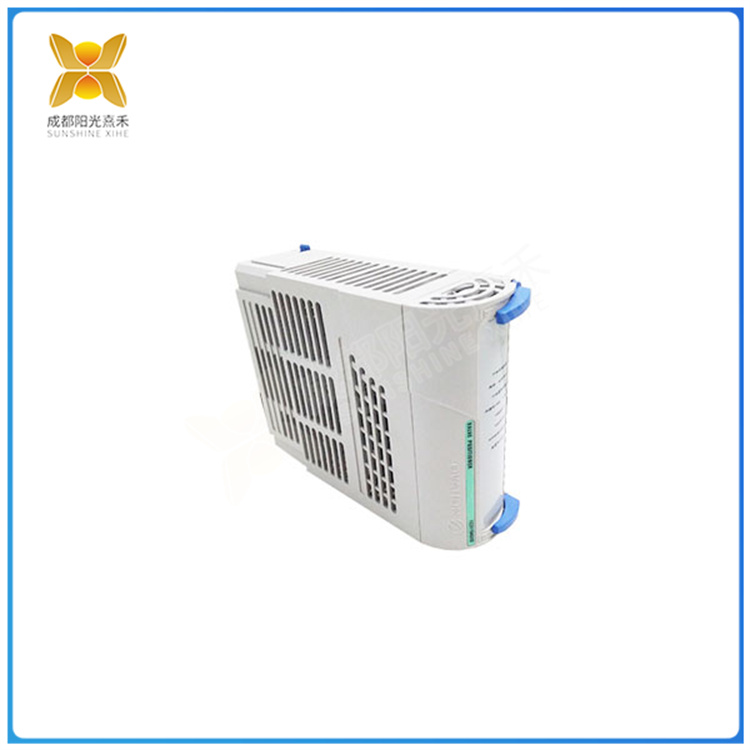Description
1C31181G01 压力飞轮
矢量控制(VC)方式
矢量控制变频调速的做法是将异步电动机在三相坐标系下的定子电流la、lb、lc、通过三相- 二相变换,等效成两相静上坐标系下的交流电流la1lb1,再通过按转子磁场定向旋转变换,等效成同步旋转坐标系下的直流电流Im1、It1(lm1相当于直流电动机的励磁电流,lt1相当于与转矩成正比的电枢电流),然后模仿直流电动机的控制方法,求得直流电动机的控制量,经过相应的坐标反变换,实现对异步电动机的控制。其实质是将交流电动机等效为直流电动机,分别对速度,磁场两个分量进行立控制。通过控制转子磁链,然后分解定子电流而获得转矩和磁场两个分量,经坐标变换,实现正交或解糟控制。矢量控制方法的提出具有划时代的意义。然而在实际应用中,由于转子磁链难以准确观测,系统特性受电动机参数的影响较大,且在等效直流电动机控制过程中所用矢量旋转变换较复杂,使得实际的控制效果难
直接转矩控制(DTC)方式
1985年,德国鲁尔大学的DePenbrock教授提出了直接转矩控制变频技术。该技术已成功地应用在该技术在很大程度上解决了上述矢量控制的不足,并以新颖的控制思想、简洁明了的系统结构、优良的动静态性能得到了迅速发展。电力机车牵引的大功率交流传动上。直接转矩控制直接在定子坐标系下分析交流电动机的数学模型,控制电动机的磁链和转矩。它不需要将交流电动机等效为直流电动机,因而省去了矢量旋转变换中的许多复杂计算,它不需要模仿直流电动机的控制,也不需要为解耦而简化交流电动机的数学模型。矩阵式交一交控制方式
VVVF变频、矢量控制变频、直接转矩控制变频都是交一直一交变频中的一种。其共同缺点是输入功率因数低,谐波电流大,直流电路需要大的储能电容,再生能量又不能反馈回电网,即不能进行四象限运行。为此,短阵式交一交变频应运而生。由于矩阵式交一交变频省去了中间直流环节,从而省去了体积大、价格贵的电解电容。它能实现功率因数为1,输入电流为正弦且能四象限运行,系统的功率密度大。该技术虽尚未成熟,但仍吸引着众多的学者深入研究。其实质不是间接的控制电流、磁链等量,而是把转矩直接作为被控制量来实现的。具体方法是:
1、控制定子磁链引入定子磁链观测器,实现无速度传感器方式
2、自动识别(ID)依靠的电机数学模型,对电机参数自动识别;3、算出实际值对应定子阻抗、互感、磁饱和因素、惯量等算出实际的转矩、定子碰链、转子速度进行实时控制4、实现Band-Band控制按磁链和转矩的Band-Band控制产生PWM信号,对逆变器开关状态进行控制。矩阵式交一交变频具有快速的转矩响应(<2ms),很高的速度精度(+2%,无PG反馈,高转短精度(<+3%),同时还具有较高的起动转矩及高转矩精度,尤其在低速时(包括0速度时),可输出150%~ 200%转矩
1C31181G01 压力飞轮
Vector control (VC) mode
The method of vector control variable frequency speed regulation is to convert the stator current la, lb, lc in the three-phase coordinate system into the AC current la1lb1 in the two-phase static upper coordinate system through the three-phase two-phase transformation, and then transform by directional rotation according to the rotor magnetic field. It is equivalent to the DC current Im1 and It1 in the synchronous rotating coordinate system (lm1 is equivalent to the excitation current of the DC motor, lt1 is equivalent to the armature current proportional to the torque), and then the control quantity of the DC motor is obtained by imitating the control method of the DC motor, and the control of the asynchronous motor is realized through the corresponding inverse transformation of coordinates. In essence, the AC motor is equivalent to the DC motor, and the two components of speed and magnetic field are respectively controlled vertically. By controlling the rotor flux linkage and then decomposing the stator current, two components of torque and magnetic field are obtained. The proposed vector control method has epoch-making significance. However, in practical application, because the rotor flux is difficult to accurately observe, the system characteristics are greatly affected by the motor parameters, and the vector rotation transformation used in the control process of the equivalent DC motor is complicated, which makes the actual control effect difficult
Direct torque control (DTC) mode
In 1985, Professor DePenbrock of Ruhr University in Germany proposed the direct torque control frequency conversion technology. This technology has solved the shortcomings of vector control to a large extent, and has been rapidly developed with novel control ideas, concise system structure and excellent dynamic and static performance. This technology has been successfully applied to the high-power AC drive of electric locomotive traction. Direct torque control analyzes the mathematical model of AC motor directly in the stator coordinate system, and controls the flux and torque of the motor. It does not need to equivalent the AC motor to the DC motor, thus eliminating many complex calculations in the vector rotation transformation, it does not need to imitate the control of the DC motor, and does not need to simplify the mathematical model of the AC motor for decoupling. Matrix crossover control
VVVF frequency conversion, vector control frequency conversion and direct torque control frequency conversion are all one of the AC frequency conversion. The common disadvantage is that the input power factor is low, the harmonic current is large, the direct current circuit requires a large energy storage capacitor, and the regenerative energy can not be fed back to the grid, that is, it can not carry out four-quadrant operation. For this reason, short-formation AC-AC frequency conversion came into being. Because the matrix AC-AC frequency conversion eliminates the intermediate DC link, the large and expensive electrolytic capacitor is eliminated. It can realize power factor of 1, input current of sinusoidal and four-quadrant operation, the power density of the system is large. Although the technology is not yet mature, it still attracts many scholars to further study. Its essence is not indirect control current, flux equal, but the torque directly as the controlled quantity to achieve. The specific methods are:
1. The control stator flux is introduced into the stator flux observer to realize the speed sensorless mode
2, automatic identification (ID) depends on the motor mathematical model, automatic identification of motor parameters; 3. Calculate the actual value corresponding to the stator impedance, mutual inductance, magnetic saturation factor, inertia, etc. Calculate the actual torque, stator chain, rotor speed for real-time control. 4. Realize Band-Band control to generate PWM signal according to the Band-Band control of the flux link and torque, and control the switching state of the inverter. Matrix AC-AC frequency conversion has fast torque response (<2ms), high speed accuracy (+2%, no PG feedback, high short-turn accuracy (<+3%), but also has high starting torque and high torque accuracy, especially at low speed (including 0 speed), can output 150%~ 200% torque

购买咨询热线/Phone:18859254943
邮箱/Email:sales@ygdcs.com
地址:成都高新区天益街北巷52号附14号2层




 购买咨询热线/Phone:
购买咨询热线/Phone: 邮箱/Email:
邮箱/Email: 地址:
地址:


